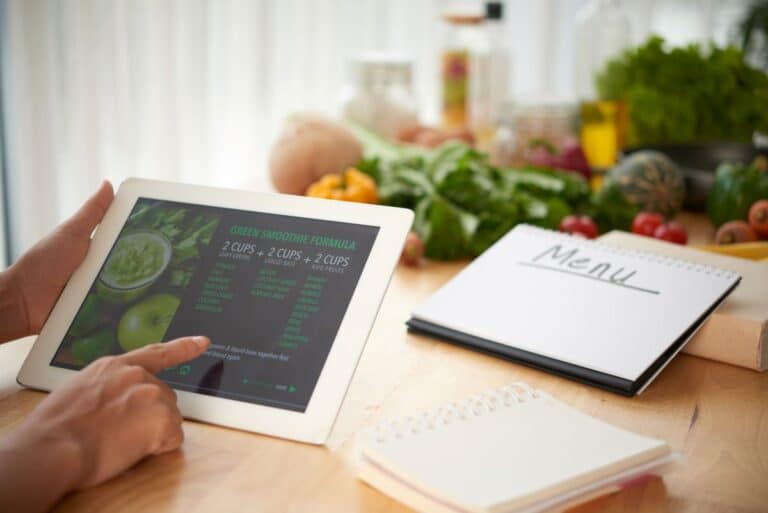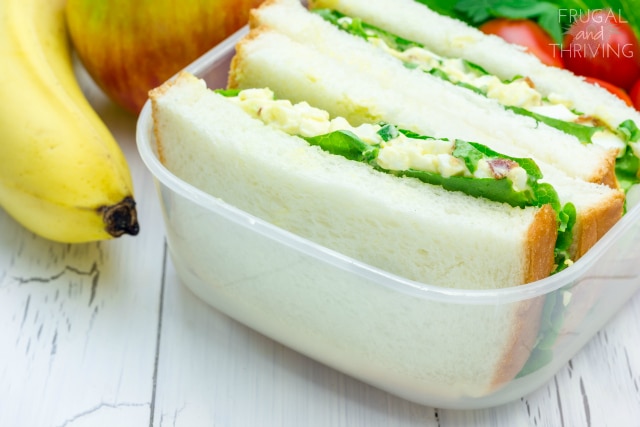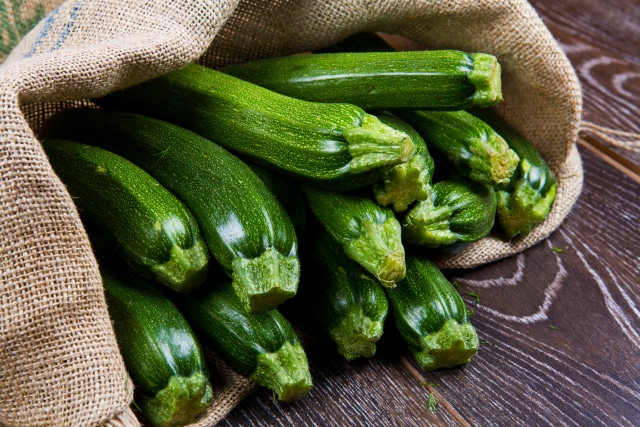How to Eat Well on an Extremely Tight Grocery Budget
This website may earn commissions from purchases made through links in this post.
Can you eat well on a tight budget? The answer is yes with the strategies below.
Eating well on a budget is one thing, but is it possible to eat healthy food on an ‘instant noodle’ budget?
Can you feed your family food they will eat and enjoy, even when you’re feeling like Mother Hubbard, and there are cobwebs in your wallet?
It’s not easy. It does take some careful planning, a bit of extra time cooking and a few weeks to build up staples. It might also mean getting some help from services like Foodbank if money is super tight.
When you only have a few dollars a day to feed the family, processed foods can seem cheaper, especially in the short term. Filling, high-calorie food for little outlay seems like the best option when you’re hungry.
And in the short term, that’s ok. If that’s what you have to do to get through a crisis, then give yourself some grace. When times are tough, you get through them as best you can. I’ve been there and know how hard it can be to find the money for food.
But in the long term, buying processed foods for every meal can add up.
Meals might be basic when you’re on a very tight budget, but that doesn’t mean you can’t eat good healthy food.
Here are some tips on how to do it.
How to Eat Well on a Tight Budget
With inflation soaring, it’s even harder than ever to stretch the grocery budget. Below are some tips.
Where to Get Help if You Need it
If money is super tight, there are places that can help you with groceries and feeding the family. These include:
- Foodbank
- Anglicare
- AskIzzy
- The Salvos
- OzHarvest
- Vinnies
- Your school (from your kid’s primary school through to university, schools usually have programs to help students with meals. My kid’s school, for instance, partners with a local charity to provide meals for families who need them).
You can also call your local neighbourhood centre as they can put you in contact with local organisations that help with food and groceries in your area. Or you can check out the OzHarvest website above.
Look for Cheap Nutrient-Dense Foods
Junk food can be more filling, but isn’t very good value nutrient-wise.
Get more value from your grocery budget by focusing on foods that are high in nutrients and that are filling, like beans, legumes, whole grains, and starchy vegetables like potatoes.
Vegetables and legumes are high in nutrients and low in cost, especially if you focus on seasonal produce. Coupled with starchy food like whole grains and some cheap protein (think of stir-fried veggies, brown rice and a fried egg), you have a complete and nutritious meal for only a dollar or so per serve.
Check out this article for some of the cheapest frugal fruits and vegetables that are also nutritious.
There are two specific nutrients to focus on – especially at breakfast – that will help you stay fuller for longer, saving money: protein and fibre.
Studies (and these) show that eating more lean protein at breakfast can make you feel fuller for longer and reduce snacking throughout the day, saving you calories and money. It can also help you concentrate longer, important for kids at school!
The other nutrient that keeps you fuller for longer is fibre, especially when paired with a protein.
Here are three cheap breakfast alternatives full of fibre and protein:
Soaked oats, $1.60 per serve*. These are super convenient, extremely cheap and healthy. You can serve it with a dollop of yoghurt (a good source of protein, calcium and probiotics) and some fresh seasonal fruit, like half an apple, for an all-around healthy, cheap breakfast. And, of course, regular porridge is also a great way to start the day.
*1 serving of oats soaked in water and served with a couple of tablespoons of vanilla yoghurt and half an apple (2022 Woolworths home-brand prices – you can probably get it cheaper at Aldi).
Eggs on wholemeal toast, $1.08 per serve*. An egg contains 6 grams of protein, so two scrambled eggs, plus some whole wheat bread, is a great way to start the day. Eggs take about 2 minutes to scramble in the pan, so cheaper and more convenient than you might imagine.
You can add a piece of fruit or some spinach or other veggies if you choose to fill out the meal.
*1 serving based on cage-free eggs and home-brand wholemeal bread and 1 tablespoon of real butter for cooking and spreading. This is cheaper if you use margarine.
Wholemeal pancakes, $1.04 per small batch*. One for the weekend. I put ground flaxseed in mine, but it’s not essential, and the kids are full after just one pancake. Serve with a dollop of yoghurt and fresh seasonal fruit for a delicious weekend breakfast.
*1 serving based on a super simple batter using just 1 cup of wholemeal self-raising flour, 1 egg, and about a cup of milk. You can add sugar if you like. You can also make this cheaper by using powdered milk or watering down the milk. This is very easy to scale up and great for afternoon snacks as well. Leave out the sugar and make a very thin batter for crepes that can be filled with steamed vegetables in white sauce and rolled for a cheap dinner.
PLAN YOUR MEALS
Planning your meals is essential if you’re on a tight budget. Rather than shop day-to-day for what you need, menu planning helps you make the most of cheap staples and reduces waste.
First, make a list of inexpensive meals to draw from.
There are lots of ideas on this blog (see below also) and on the net (also check out my frugal meals board on Pinterest), but consider meals based on good starches like brown rice, wholemeal pasta or potatoes (think fibre) with cheaper protein options like eggs, beans or lentils and tofu or mince and, of course, lots of vegetables.
Beans, chickpeas and lentils are cheap and full of fibre and protein and other nutrients, keeping you fuller for longer. A wrap spread with homemade hummus is a healthy lunch that’s cheap, and it will help you avoid snacks later in the day, saving you even more money. Refried beans are another great wrap inclusion that is healthy, tasty, super-filling and easy to make.
Write a menu plan for the week using your list of cheap meals. Write down meal ideas for breakfast, lunch and snacks as well. Don’t forget to plan for leftovers and double batch meals to make life easier and to ensure you’ve got backup meals in the freezer for nights when you don’t feel like cooking – saving you take away.
Finally, write out your grocery list. Put an asterisk next to any items that are optional. That means if you go over budget, those items can go back on the shelf.
Save Money on the Groceries eBook

For more ways to meal plan and save money on groceries, check out the eBook Plan Cook Save: How to Eat Well When Money is Tight and Time is Short.
*Learn how to set the right grocery budget for your circumstances.
*Find out the easiest and quickest way to reduce the grocery bill.
*Discover a meal planning strategy that will only take you a couple of minutes a week but will save you hours.
Build up Your Pantry Staples
Building a stock of staples – slowly and over time – will save you money in the long run.
A bag of rice may cost more than an instant meal upfront, but you’ll get many more meals for your money.
You don’t have to stock your pantry with staples all in one go. Just buy one or two staples each week. Then all you need to do is restock them when you run out.
Look for specials at the grocery store (especially 50% off or more) when stocking up on staples, so you get more for your money.
Stocking your pantry may mean you have to eat on an even tighter budget for a couple of weeks, but you will eat better in the long run.
Here are some basic staples to consider stocking:
- Rolled oats
- Rice
- Wholemeal flour
- Tinned fish
- Canned tomatoes
- Tinned and dry beans, lentils, chickpeas
- Pasta
- Sugar
- Spices
- Cooking oil
- Vinegar
- Baking powder
- Milk (fresh, dried or both)
- Salt and pepper
- Miso paste
- Butter
- Eggs
- Onions
- Frozen vegetables
- Nuts and Seeds
By having these staples on hand, you will always have a variety of cheap meals to cook. And you can focus the bulk of your grocery spending on fresh produce.
A great way to build your pantry is to keep an eye on catalogue specials, especially reductions that are 50% off or better.
Eat Cheap Protein
Protein doesn’t have to mean meat.
As already shown, an excellent alternate source of protein is the humble egg. Versatile, cheap and nutritious. This vegetable frittata showcases how you can make a filling meal with a few eggs and what’s kicking around your produce drawer.
Other cheap protein options include cheese and other dairy foods, tinned fish, dried or tinned beans, lentils, tempeh, tofu, chicken wings or drumsticks, sausages, mince and organ meat.
Ways to Eat Meat for Less
If money is tight, meat is probably not something you eat regularly. Or maybe you’re cooking for someone who insists on eating meat every day and need to find ways to save.
Ways to eat meat and save money include:
- eating even less
- stretching what you do eat; and
- buying the most economical cuts
Mixing vegetarian meals with meat meals over the course of the week reduces overall meat consumption. A plant-based diet, even if it is just part-time, is healthy and cheaper than eating meat.
When you do eat meat, use it as a condiment rather than the main attraction. Cook meat stretcher meals like casseroles, soups, stews, pasta, bakes, and stir fry. All of these meals can be combined with lots of vegetables and lentils, beans or other healthy starches to make a little bit of meat go a long way.
Economy meats include sausages, mince, chicken wings and drumsticks, tougher cuts for stewing and organ meat (which is highly nutritious!). Stretch these meats too – for example, make a sausage stew with fewer sausages and lots of beans and vegetables – and you end up with an even cheaper meal that’s full of nutrition.
You can add cooked lentils to burger patties for cheaper rissoles or burgers or even hide them in Spaghetti Bolognese. Finely grated vegetables added to these will make a little meat go further as well. No one will be the wiser, but you’ll feel savvy saving money and sneaking extra nutrition into your family’s meals.
Consider Making Your Own Basics
it’s hard when time is also tight, but making your own basics can allow you to eat well while saving a tonne of money.
Stock is an essential frugal ingredient for your kitchen. It can be made for next to nothing if you save your vegetable scraps in the freezer and make stock from leftover bones.
Chicken drumsticks are an economical meal, but you can stretch your dollar even further by making stock from the leftover bones.
From the stock (which is nutritious in itself), you can make soups, risotto (super cheap and tasty), stews and sauces.
Other basics to consider making if you have the time include bread, tomato sauce, yoghurt, and mayonnaise (check out this post for mayo, marinara and other sauces).
Shop for Vegetables in Season
Vegetables are the cheapest when they are in season, so you’ll save money by planning meals around what’s in season.
At certain times of the year, our greengrocer sells whole pumpkins for 69c each. And at that price, I try to pick the biggest pumpkins I can find.
Uncut pumpkins keep for months on the benchtop. For 69 cents, you can make a whole variety of cheap meals.
Roast pumpkin risotto, for instance, made with homemade stock, costs around $1 – $2 for the whole family. And it’s a pretty flash dinner to serve to guests, with a nice side salad and some crusty bread. A large pot of pumpkin soup is around $1.
Some other vegetable staples are usually cheap all year round (unless flood, fire, drought…) include:
- onions
- potatoes
- cabbage
- carrots
- celery
- sweet potatoes
- frozen vegetables like peas and beans
- tinned or bottled tomatoes
How to Make Budget Meals Exciting
Two things can take your meals from boring to exciting: herbs and spices. Ordinary and cheap staples can be transformed into gourmet delights by adding herbs, spices and sauces.
Herbs are best grown to save money; otherwise, they can be expensive. They are the easiest thing to grow, even if you’re a brown thumb like me or don’t have a lot of space. A warm windowsill is all you need.
Spices are purchased in small amounts and are inexpensive, but you can usually save even more if you purchase them from an ethnic grocery store.
Explore traditional cuisines of other ethnic cultures for cheap meals that will tantalise the taste buds and never leave you feeling bored.
Preserve Cheap Produce
Homemade jam costs a fraction of the price of a store-bought jam if you can get free of very cheap fruit; it’s only a few cents per jar for the sugar.
And for just two or three hours, you could have enough jam to last a whole year, plus some leftovers for gifts.
You can also freeze excess produce that you purchase when it’s cheap and in season, and this will save you money on vegetables at other times of the year.
Buy Home-Brand and Save
A lot of staples are exactly the same as the name-brand items, bar the price. Not everything, I can’t stand home-brand mustard, for instance, but for most staples like rice or pasta, there’s no discernible difference in quality between the brand and home-brand varieties.
Look for home-brand items to save on everyday staples.
Shop at Aldi
If you have an Aldi store near you, you can save a huge amount over shopping at Coles or Woolies. But take the time to compare prices, sometimes it can be cheaper to buy home-brand items over Aldi items.
Shop the Sales
A great way to stock your pantry and save on food is to buy up when staple items are on sale, especially at half-price. Shelf-stable foods like tinned foods and dried foods are great for stocking up.
For more information on how to stock up on foods during sales, check out this article.
Look for Markdowns
You can usually buy bread for a fraction of the price near closing time. Other bakery goods, deli goods and BBQ chickens are also often marked down near the end of trade (but more likely on Mondays, Tuesdays and Wednesdays).
To save money on meat, look for markdowns on meat that is close to its use-by date and freeze or use straight away.
I’ll confess, we’ve eaten cream that we’ve purchased on markdown after the use-by date expired because it was perfectly ok! I don’t recommend you risk food poisoning!! but use common sense when it comes to food; don’t just throw it away because of the date on the packet.
Think about Drinking Calories
As a coffee addict, this one is hard for me, but tea, coffee, soft drink, cordial, juices, bottled water, hot chocolate – these can all add up.
If you’re on a tight budget, the cheapest thing to drink is water, at least most of the time. A jug filter will improve the taste of tap water without costing a fortune, and to make it more appealing, add a squeeze of lemon juice or a slice of lime.
For more variation, look for cordial and tea bags when they’re on sale.
Shop Outside the Supermarket
The supermarket isn’t always the cheapest place to shop.
Local markets, greengrocers, wholesale meat suppliers, ethnic grocers and discount stores like The Reject Shop and Big W are often cheaper than the supermarket, so it pays to shop around and save.
You can use a catalogue app to stay on top of sales in various stores to get the best savings.
Start a Garden
You can try supplementing your grocery budget with the food you grow yourself.
If you’ve never had a garden before, start by growing sprouts on the kitchen bench! Sprouts are easy to grow, cheap and very nutritious.
As mentioned above, pots of herbs are also easy to grow, you don’t need a garden, and they make an ordinary dish gourmet.
This article shares some of the easiest veggies to grow.
Cheap Meal Ideas
Below are some cheap meal ideas that we eat, many with recipes on the blog.
Breakfast: Porridge, Bircher Muesli, egg on toast, vegetable omelette, homemade pancakes, homemade muffins, baked beans on toast.
Lunch: Leftovers, soup, sandwiches, wraps, noodles.
Dinner: Vegetable frittata, omelette, soup, casseroles, mince bake, stir-fry, vegetable curry, vegetable fritters, fried rice, roast vegetable pasta, chilli beans, chilli mince, ratatouille, tuna casserole, dahl, marinated wings or drumsticks, burritos, baked potatoes with filling.
Snacks: Homemade popcorn, fruit, vegetables, dip, homemade baked goods.
It is possible to eat well while sticking to a tight budget. It just takes a little extra planning, some creative cooking and some time to build up your pantry.









my husband likes wraps made with torttias. I have made my own on a crepe pan with corn meal , then wrapping the meat and salad in them. You can use them instead of cannaloni pasta tubes too. I have also made thin omeletts and wrapped hot veg filling in them (potatoes peas pumpkin mashed of course – all left overs:) ).I just discovered how easy it is to make your own tortelline( less meat etc for stuffing or left overs) and other pasta , fresh cooks quicker too!. What about gnocci soooo! easy -quick cooking you could just put a jar of pasta sauce over them or any other sort of sauce , I use the el cheapo pasta parmesan you buy in the sauce aisle in packets alright its not authentic but you still get the idea.
Raw pumpkin doesn’t store too well in the freezer -if you want to roast or boil it BUT if you want to make pumpkin soup it is perfect. Peel and cube freeze in ziplock bags with the air pushed out and you can make a pot of pumpkin soup in about 15 minutes.
1 cup of stock or water to 1 medium bag of pumpkin cubes straight from freezer . Bring to boil till pumpkin is soft and blend. too easy.
It’s very cold in the mountains at the moment and sometimes I don’t feel like walking up to the shops, surprising how inventive you can become with pantry staples.
Some great tips, thanks Eileen.
Love the idea of freezing pumpkin for easy soup!!
Excellent article, however, I didn’t see avocado or quinoa on your list. I use them both regularly. The avocado is an excellent source of protein all by itself. While they may seem a little expensive to some, I find that when I shop the farmer’s market there is usually a good deal. Since they will substitute meat protein it winds up being a very good deal for me. I add them to smoothies, put them in salad, have as a side dish, of course on my taco, and even in my grilled cheese sandwiches and regular sandwiches too.
Quinoa with bean is the perfect protein combo! I also eat Quinoa as a cereal in the morning, a side dish for dinner, in salad, and I make it as a salad adding veggies or berries if it’s a fruit salad. It’s inexpensive and delicious and a perfect substitute for meat protein.Try using it as you would rice…plus it comes in 2 varieties. I like them both!
I would love stocking oats. I love for snacks and muffins. Good for health. In the case of buying two for storage.
Fabulous ideas. Well done.
Thanks Jo.
Great article Melissa – very helpful – and I enjoyed the reader tips as well !
I feel out of every single blog post or article I have ever read on eating healthy on a budget this is by far the most useful and realistic and believe me I have read a LOT! I do not tend to comment but I was so impressed with your suggestions and knowledge. I already follow most of what you do and suggest but am looking to see if there is anything else I could be doing better. Thank you so much for sharing that just because your resources are limited, it is still possible to eat healthy on a very tight budget.
Thanks Amber.
Great Tips! The only thing I would add is to keep recipes simple. Very few of my tried and true healthier, easier, and least expensive meals and sides have more than three to five ingredients. By combining fewer items with sales on as many as possible keeps most complete meal servings under, averaged or around $2.50 (USD). This allows my wife and I to eat well for a little less than 10% of our monthly take home income based on five meals a day. Most meat proteins are based on 3 to 4 ounces per meal which is under $1/serving on most recipes with another $1-$1.50 for starch (potatoes, rice, pasta) and fresh or frozen fruit or vegetable servings.
Thanks for sharing, great tips too :)